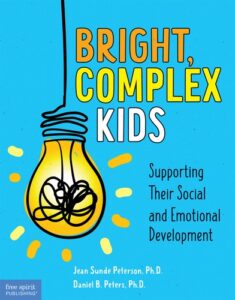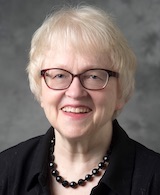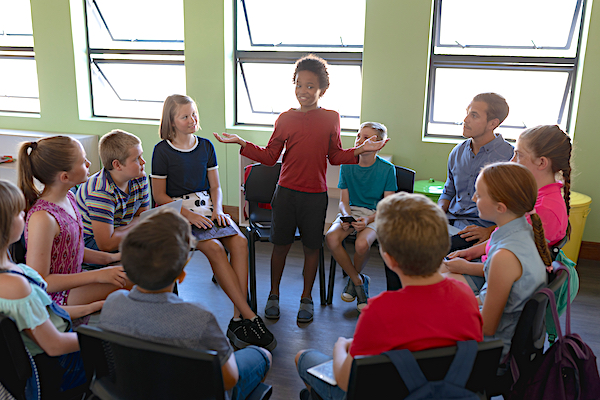Changing School Climate: An Unexpected Recipe
Some years ago, John Littrell and I studied Claudia, a school counselor, who had changed her K-5 elementary school of 500 students from extreme acrimony to impressive harmony during her first three years there. Among Claudia’s key elements were listening and responding strategies and creative programming.
We immersed ourselves in her school and community, interviewing students, parents, colleagues and administrators. She was surprised by our interest and by our conclusions. “It’s just common sense,” she said.
We agreed, but the change in the school climate was intentional, deep, and unusual. We concluded that all adults invested in the well-being of kids can apply her basic approach. (Littrell & Peterson, 2005)
Claudia’s recipe
Claudia consistently used small-group strategies. Multiple student groups met weekly with her to address bullying, manage anger and impulsivity, and “use my brain.” Some groups helped her secure coats for children as winter approached and develop other service projects to benefit the neighborhood.
Each group was called a “club” (“All kids like clubs,” she said) and was focused on a specific concern. They discussed, normalized and addressed problems with simple, straightforward language.
As Claudia gained the trust and respect of teachers, they began to request that she come into their classrooms to help them solve school problems – like helping classmates ensure a smooth transition for a new student. She began teaching the teachers her strategies.
Claudia’s strategy for helping students gain control and make changes wasn’t a “top-down” approach. She typically appointed an ad hoc 3-student panel for such situations, with an extra chair that any student could occupy briefly if they had an idea to share.
When she met with a panel, she might begin with “How could you as a class make Jason’s first days at our school very, very difficult? How could you make his problem bigger?” By focusing their attention on making a situation a bigger problem, she was emphasizing agency. If they could imagine ways to make it bigger, they would know the ingredients and probably could make the problem smaller.
Claudia’s strategies became so familiar that, in just a few minutes, kids could apply impressive wisdom and concern and “solve the problem.”
Working with individual students
We also saw Claudia apply counseling strategies with individual kids on the playground. She even motioned to some of them to join us on the sidelines: “Tell John and Jean how you stopped fighting” or “ . . . how you stopped swearing.”
Implicit was that the children, not a heavy-handed disciplinarian, were the problem-solvers. The students proudly and frankly made comments like “I used to fight and swear, but now I use my brain” Claudia even taught kindergartners about the role of the amygdala, how to pronounce it, and how to “calm it down.”
It was a lesson the school principal also learned. Before Claudia arrived, a paddle was used on offenders, who routinely lined up after recess for their punishment. The paddle was retired after the recess culture changed. “She helped me change my approach,” the principal said.
Why did Claudia’s strategy work?
It was a paradoxical strategy that began with acknowledging that there was indeed a problem (for example, older students requiring that young children run a gauntlet of nasty comments on their way home).
How might the younger students make the problem bigger? “I could leave school at exactly the same time every day, alone, so they’d know when I’d be coming by” or “I could walk with bad posture and look at the ground – not confident.” The next step, asking for suggestions for making the problem smaller, might lead to “I could always walk with a group” or “I could help a teacher or read in the library until my grandma can pick me up.”
This particular situation probably would warrant alerting the school principal and school counselor in case an intervention at school was possible – even if the situation did not occur on school property. If several students had the problem, they could approach those adults together – with assertive self-advocacy.
Claudia did not preach. She kept the focus on the kids’ ideas and conveyed credible optimism, without empty cheerleading, that they had the ability to survive and make changes in how they responded to situations.
She helped them figure out what was possible – and what wasn’t. Instead of making shaming statements about what was “wrong,” she helped students develop and validate their strengths (“I’ve been impressed by your kindness – how you helped your friend feel comfortable in school” or “I appreciate your good mind when we’re discussing complicated situations” or “You’re a good problem-solver” or “You’re a survivor”).
Claudia helped them make sense of feelings and behaviors (“No kid should have to feel like that – I’m sorry you’ve had to deal with that” or “It makes sense that you said that” or “He’s twice your size”). A common comment, giving agency, was “Let’s put our heads together, as a group, and figure out what you can do to make the problem smaller.”
Spreading the skills
The kids took their skills home, and parents gratefully told Claudia that a child might say to a sibling, “We need to make the problem smaller.” Some parents said they themselves were using “the problem language” the kids had learned.
During our interviews, we sensed that the broader community, which was dealing with severe, complicated economic and addiction issues, increasingly felt the positive impact of her work in the school. She had helped change the school culture and, to some extent, the community culture as well.
What was impressive about Claudia’s work was that it was practical, unadorned, and thoroughly focused on children’s wellbeing. She did not “lead” beyond what the kids brought to her and what was needed to facilitate discussion. Her groups “led themselves” as she stayed quiet when a problem needed to be resolved. Neither she nor the students treated privacy lightly.
Students took problem-solving seriously, and teachers, by observing Claudia, gained skills. Because the children addressed situations collaboratively, they were also bonding, learning to trust, tamping down anxiety. In a playground conversation we observed, she said to a fifth-grader, “Everyone has problems. Tell John and Jean what yours was.” The boy confidently described how he’d be in the “paddle line” almost every day after recess until he learned to stop hitting kids.
The importance of trustworthy adults
Claudia’s strategies reflected her creative adaptations of familiar counseling approaches (Watzlawick, Weakland, & Fisch, 1976), but she taught John and me that all educators, and parents as well, can make use of them.
Counselors are trained thoroughly in ethics, which emphasize respect for student and family privacy. When interacting in the classroom or hallways or on the playground, any adult inquiring about “problems” should avoid voyeurism – that is, being interested in problems in order to be titillated by them and feed gossip. When adults in schools are trustworthy with information, they might be life-savers.
Many school problems are social at their core. Claudia normalized “problems,” which made them accessible and resolvable – for kids and their families at all levels of the community. With practice, and without sarcasm or a negative tone, parents and teachers can become adept at offering genuine, respectful support while also realizing that they have the power to make problems bigger or smaller. With a new sense of agency, the burdens on their shoulders and the shoulders of their students might feel lighter.
References:
Littrell, J. M., & Peterson, J. S. (2005). Portrait and model of a school counselor. Houghton Mifflin/Lahaska Press.
Watzlawick, P., Weakland, J. H., & Fisch, R. (1974). Change: Principles of problem formulation and problem resolution. Norton.
Jean Sunde Peterson, Ph.D., professor emerita and former director of school-counselor preparation at Purdue University, was a long-time classroom teacher in her first career. In her second, she often worked clinically with high-risk youth and their families. These experiences and her extensive research of kids’ social and emotional development inform her conference presentations.


































